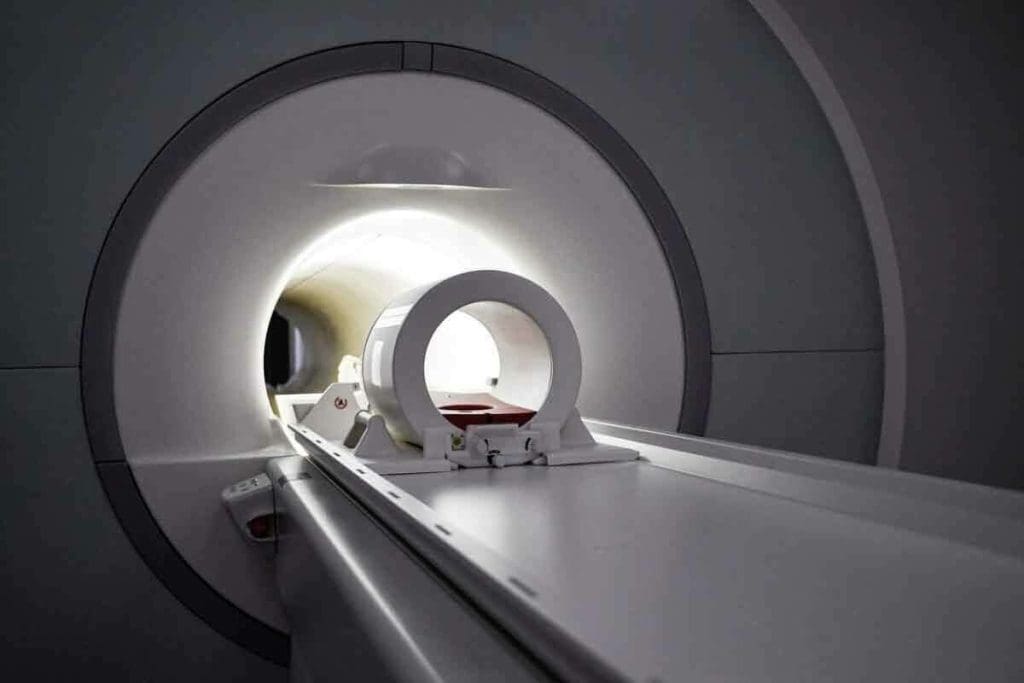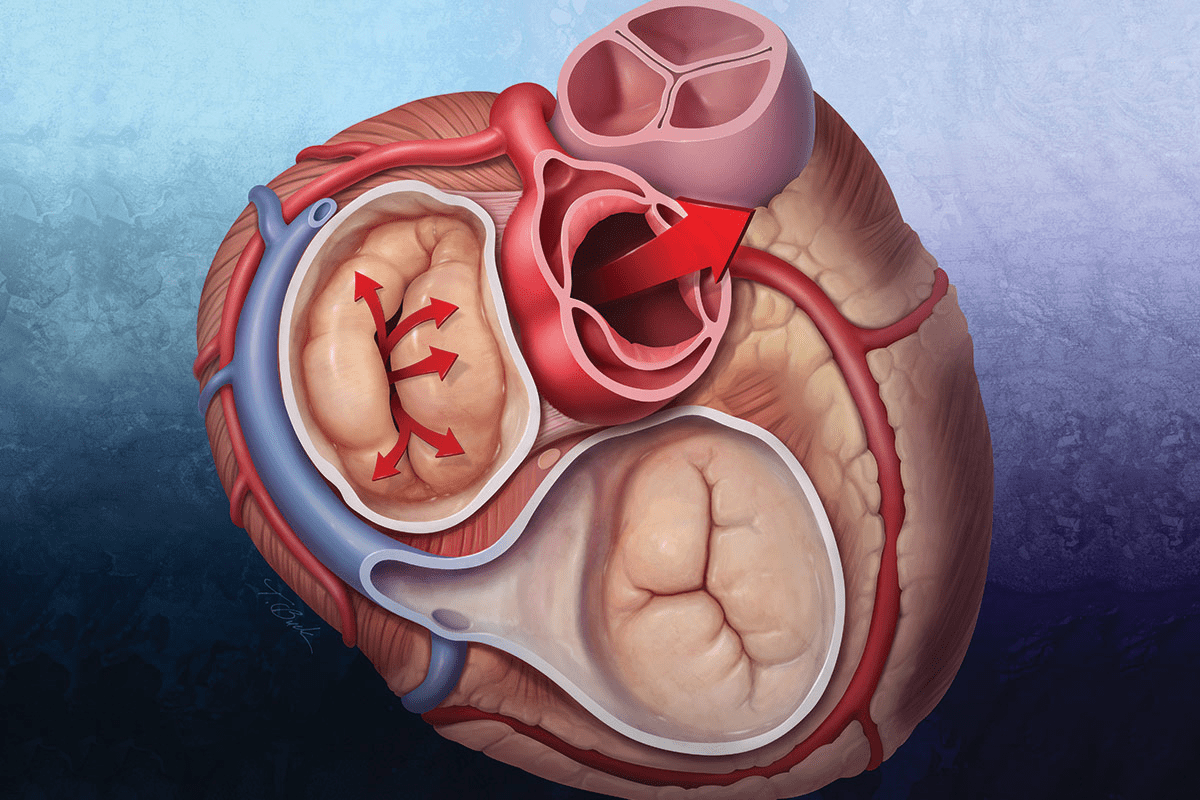Last Updated on November 27, 2025 by Bilal Hasdemir

Choosing between a CT scan vs MRI can be confusing, especially when it comes to understanding which is better for your health. At Liv Hospital, we focus on your comfort and use the latest imaging technology to guide you toward the right choice.
Both CT scans and MRI scans are advanced imaging tools, but they work differently. A CT scan uses X-rays, making it ideal for quickly checking bones, injuries, and certain cancers. In contrast, an MRI scan uses magnetic fields and radio waves, giving detailed images of soft tissues like the brain, muscles, and organs.
When comparing a CT scan vs MRI, it’s important to know what your doctor is looking for. CT scans are faster and often used in emergencies, while MRIs provide more detailed images for complex conditions.
Understanding the key differences between a CT scan vs MRI helps you make smarter health choices and ensures you get the best care possible.
Key Takeaways
- CT scans use X-rays to produce images, while MRIs use magnetic fields and radio waves.
- CT scans are quicker and often used in emergency situations.
- MRIs provide more detailed images of soft tissues like the spinal cord and ligaments.
- The choice between a CT scan and an MRI depends on the specific medical condition being diagnosed.
- Both CT scans and MRIs are generally considered safe with minimal risk of side effects.
Understanding Medical Imaging Technologies

Medical imaging has changed how we diagnose and treat diseases. It gives us deep insights into the body. We use different technologies to see inside us and find health issues. Let’s look at how imaging has evolved, its role in medicine, and the types of scans we use.
The Evolution of Diagnostic Imaging
Diagnostic imaging has grown a lot, starting with X-rays in 1895. New tech has brought us CT scans and MRI scans. These tools help doctors find and fix problems better. Advanced imaging is key in today’s medicine. It helps doctors see and track many health issues. MRI and CT imaging are top choices, each good for different things.
- MRI scans are best for brain or muscle problems because they show soft tissues well.
- CT scans are used in emergencies and for checking the lungs, liver, and other organs.
Overview of Common Imaging Modalities
Medical imaging includes many types, each with its own uses. The right scan depends on the health issue, patient needs, and what the doctor wants to see.
- CT scans use X-rays to make detailed pictures of the body.
- MRI scans use magnetic fields and radio waves to show internal details clearly.
Knowing the differences between these scans is important. It helps doctors and patients get the right diagnosis and treatment.
CT Scan: Technology and How It Works

CT scans use X-ray technology to show detailed images inside the body. They help doctors find and diagnose many health issues. This tech is key in emergency rooms for spotting things like bleeding inside or broken bones.
X-ray Technology Behind CT Scans
CT scans use X-rays to see inside the body. Unlike regular X-rays, CT scanners move around the body. They take pictures from many angles.
This lets them make detailed images, or slices, of the body. These slices can be stacked to show a 3D view of what’s inside.
CT scans work by seeing how different tissues absorb X-rays. This info is used to make clear images of the body’s inside parts.
The CT Scanning Process
The CT scan starts with the patient on a table that slides into the scanner. The scanner moves around, sending out X-rays. These X-rays are absorbed differently by the body’s tissues.
These differences help create detailed images of the body’s inside. The whole process is quick and doesn’t hurt.
“The CT scanning process is quick and painless, making it an ideal diagnostic tool for emergency situations.”
”Radiologist
The whole scan takes just a few minutes. Getting ready and finding the right spot might take longer.
Types of CT Scanners
There are many types of CT scanners, each with its own benefits. Here are a few:
- Conventional CT Scanners: These are the most common and give high-quality images for many uses.
- Spiral or Helical CT Scanners: These scanners move continuously as the patient slides through. They’re faster and use less radiation.
- High-Speed CT Scanners: These are for quick scans. They’re great in emergencies when time is very important.
| Type of CT Scanner | Key Features | Typical Use Cases |
| Conventional CT | High-quality imaging, widely available | General diagnostic purposes |
| Spiral/Helical CT | Faster scanning, reduced radiation | Patients requiring quick diagnosis, reduced radiation exposure |
| High-Speed CT | Rapid imaging | Emergency situations, trauma cases |
Knowing about CT scan technology and the different scanners helps everyone make better choices about medical imaging.
MRI Scan: Technology and How It Works
MRI technology gives us a special look at the body’s soft tissues. It’s a key tool in today’s medicine. MRI scans are great for checking the brain, spinal cord, and muscles. They provide detailed images that help doctors diagnose and plan treatments.
Magnetic Fields and Radio Waves Explained
MRI uses strong magnetic fields and radio waves. The magnetic field lines up hydrogen atoms in the body. Then, radio waves knock these atoms off track, causing them to send signals.
The magnetic field is so strong that it aligns the hydrogen atoms in the body, which are then disturbed by radio waves, producing signals that are captured to form images.
The MRI Scanning Process
During an MRI scan, the patient lies in a big machine with a strong magnet. The process starts with preparation, where a contrast agent might be given to improve image quality. Then, the actual scanning begins, lasting from a few minutes to over an hour, depending on the scan’s complexity.
“MRI has become an essential diagnostic tool due to its ability to provide high-resolution images of soft tissues without the use of ionizing radiation.”
Types of MRI Machines
There are different MRI machines, like traditional closed ones, open MRI machines for those with claustrophobia, and wide-bore MRI machines for more comfort. Each type meets different patient needs.
- Traditional Closed MRI Machines
- Open MRI Machines
- Wide-Bore MRI Machines
In conclusion, MRI scan technology is a powerful tool for diagnosing. It uses magnetic fields and radio waves to give us deep insights into the body’s soft tissues. This makes it a vital part of modern medical diagnostics.
CT Scan vs MRI: Key Technological Differences
CT scans and MRI scans are both important for diagnosing health issues. But they work in different ways. Knowing how they differ helps us see their strengths and weaknesses.
Imaging Mechanisms Compared
CT scans use X-rays to create detailed images of the body. MRI scans, on the other hand, use magnetic fields and radio waves. This difference affects the quality and safety of the images they produce.
Image Quality and Detail Comparison
Both CT and MRI scans produce high-quality images. But they are better for different things. CT scans are great for bones, lungs, and solid organs. MRI scans are better for soft tissues like the brain and muscles.
| Imaging Modality | Strengths | Weaknesses |
| CT Scan | Excellent for bone and lung imaging, quick scanning time | Involves radiation, less detailed for soft tissues |
| MRI Scan | Superior for soft tissue imaging, with no radiation | Longer scanning time can be affected by metal implants |
Radiation Exposure Differences
CT scans use a small amount of radiation. This is a concern for some patients, like children and pregnant women. MRI scans, on the other hand, don’t use radiation, making them safer for these groups.
Scan Duration and Processing Time
CT scans are usually faster, taking just minutes. MRI scans can take longer, from 15 to 90 minutes. But MRI scans often provide more detailed images, which are key for accurate diagnoses.
Choosing between CT scans and MRI scans can be tough. We hope to help by explaining the main differences. This way, patients and doctors can make better choices for diagnostic imaging.
Clinical Applications: When to Use CT vs MRI
Knowing when to use CT scans versus MRI scans is key to accurate diagnoses and effective treatment plans. Both imaging methods have their own strengths and are best for different situations.
Conditions Best Diagnosed with CT Scans
CT scans are great in emergency situations where fast results are needed. They are excellent for finding internal injuries, bleeding, and fractures. Trauma patients greatly benefit from CT scans as they get quick and detailed images to assess injuries.
“CT scans are the top choice for acute traumatic injuries because of their speed and accuracy,” says a leading radiologist. This makes them essential in emergency departments.
Conditions Best Diagnosed with MRI Scans
MRI scans are best for diagnosing soft tissue issues, like neurological or musculoskeletal disorders. They give detailed images of organs and tissues. This makes them perfect for finding problems like herniated discs, torn ligaments, or certain cancers.
MRI’s ability to show high-resolution images of soft tissues without radiation is a big plus. It’s great for diagnosing conditions that need detailed soft tissue checks.
Emergency vs Non-Emergency Considerations
In emergency cases, like internal bleeding or severe trauma, CT scans are usually the first choice. They are quick and provide immediate results. For non-emergency issues, like chronic back pain or suspected soft tissue injuries, MRI scans are often better. They give detailed images of soft tissues.
The choice between CT and MRI scans depends on the situation and what the patient needs. Understanding each modality’s strengths helps healthcare providers make better decisions. This leads to better patient outcomes.
Patient Experience Comparison
Knowing the differences between CT scans and MRI scans can ease anxiety. Patients want to know what to expect to feel comfortable and prepared.
Duration and Comfort Factors
CT scans are shorter than MRI scans. CT scans take a few minutes, while MRI scans can last from 15 to 90 minutes. CT scans are more comfortable because they are quicker and don’t keep you in a tunnel-like structure for a long time.
CT scans are better for patients who can’t stay very long or hold their breath. They are quick, which means you don’t have to stay very long. MRI scans, though more detailed, require you to stay longer, which can be hard for some.
Noise and Claustrophobia Considerations
MRI scans are much louder than CT scans because of the magnetic fields and radio waves. The loud knocking or banging noise can be scary for some. Also, the enclosed MRI machines can make people with claustrophobia feel overwhelmed.
Open MRI machines are available for those with claustrophobia. They offer a more open environment, making the experience more comfortable. But these machines are not as common as traditional MRI scanners.
Preparation Requirements for Each Scan
Preparation for CT scans and MRI scans can be different. For CT scans, you might need to fast or avoid certain medications. You’ll also need to wear a hospital gown and remove any metal objects. MRI scans have similar requirements, but you’ll also need to remove all metallic objects, including jewelry and glasses.
- CT scans may require contrast agents to be administered intravenously.
- MRI scans also use contrast agents in some cases to enhance image quality.
Contrast Agents and Their Effects
Both CT and MRI scans use contrast agents to make certain areas more visible. CT scans use iodine-based agents, while MRI scans use gadolinium-based agents. Patients with allergies or kidney conditions should talk to their healthcare provider about precautions or alternatives.
“The use of contrast agents has revolutionized diagnostic imaging, allowing for more accurate diagnoses and treatment plans,” says a leading radiologist.
Understanding these differences can help patients prepare better for their imaging procedures. This can reduce anxiety and make the experience smoother.
Cost and Accessibility Factors
It’s important to know the cost and accessibility differences between CT scans and MRI scans. These factors help us make better healthcare choices. They also affect how easy it is to get these tests.
Average Costs of CT and MRI Scans
The prices for CT scans and MRI scans can change a lot. This depends on where you go, where you are, and if you need special agents. Usually, CT scans cost less than MRI scans.
| Imaging Modality | Average Cost Range (USD) |
| CT Scan | $250 – $1,000 |
| MRI Scan | $800 – $3,500 |
The table shows that CT scans cost between $250 and $1,000. MRI scans can cost between $800 and $3,500. These prices depend on how complex the scan is, what part of the body is being checked, and if special agents are needed.
Insurance Coverage Considerations
Insurance coverage is key in figuring out what you’ll pay for CT scans or MRI scans. Most insurance plans cover these tests if they’re needed for medical reasons.
Key Considerations:
- Pre-approval requirements
- Deductibles and co-payments
- Network providers vs. out-of-network providers
Availability and Wait Times
How easy it is to get a CT or MRI scan can differ a lot. This depends on the hospital and where you are.
Geographic Accessibility in the United States
Where you live affects how easy it is to get CT and MRI scans. Cities usually have more places to get these tests. But in rural areas, it can be harder to find them.
Regional Variations:
- Urban areas: High availability, shorter wait times
- Rural areas: Limited availability, potentially longer wait times
Safety Considerations and Contraindications
Diagnostic imaging like CT scans and MRI scans, has its own safety rules. It’s key for doctors to know these to pick the right imaging for each patient.
Radiation Risks with CT Scans
CT scans use a small amount of radiation. The risk of harm from this radiation is low. But doctors think about it, mainly for young patients or those needing many scans. They look at how much radiation a patient might get over time.
Magnetic Field Risks with MRI Scans
MRI scans don’t use radiation but strong magnetic fields and radio waves. People with metal implants, pacemakers, or other metal objects might be at risk. We check if patients have these before an MRI.
Who Should Avoid Each Type of Scan
Some patients can’t have certain scans because of health issues. For example, those with metal implants or pacemakers should avoid MRI scans. Patients with past reactions to contrast agents or kidney disease need careful consideration for CT scans. We look at each patient’s health to choose the safest scan.
Recent guidelines say some medical implants should avoid MRI scans. For example, some pacemakers and ICDs can’t be near MRI machines.
Pregnancy Considerations for Imaging
Pregnancy is a big factor in choosing between CT and MRI scans. MRI is often safer because it doesn’t use radiation. But the choice depends on the case, weighing benefits and risks. We’re careful and look for other ways to diagnose when we can to keep mom and baby safe.
Important safety points include:
- Radiation Exposure: CT scans use radiation, but MRI does not.
- Magnetic Field Risks: MRI scans can be risky for people with metal implants or pacemakers.
- Pregnancy and Age: We’re extra careful with pregnant women and young patients.
- Contrast Agents: Contrast agents in both CT and MRI can be risky for those with kidney disease or past reactions.
Conclusion: Choosing the Right Imaging Test
Choosing between a CT scan and an MRI scan is key for accurate diagnosis and treatment. We’ve looked at the main differences between these imaging tests. This includes their technology, uses, and what patients need to know.
What imaging test is best depends on the medical issue and the patient’s needs. CT scans are fast and good for emergency cases, like seeing internal injuries. MRI scans are better for soft tissue injuries and detailed views of organs and tissues.
Deciding between a CT scan and an MRI scan should be done with a healthcare professional’s advice. They can decide based on the patient’s condition. Knowing the strengths and limits of each helps ensure patients get the best care. Whether it’s a CT scan or an MRI, picking the right test is vital for accurate diagnoses and effective treatment plans.
FAQ
What is the main difference between a CT scan and an MRI scan?
CT scans use X-rays. MRI scans use magnetic fields and radio waves. This makes MRI scans better for soft tissues.
Are CT scans and MRI scans used for the same medical conditions?
No, they are not used for the same things. CT scans are good for emergencies like injuries. MRI scans are better for things like muscle injuries and some cancers.
Do CT scans and MRI scans expose patients to radiation?
Yes, CT scans use X-ray radiation. MRI scans don’t use radiation. This makes MRI scans safer for some patients, like pregnant women.
How long do CT scans and MRI scans typically take?
CT scans are quick, taking just a few minutes. MRI scans can take 15 to 90 minutes. This depends on the scan’s complexity and what’s being looked at.
Are there any specific preparations required for CT scans and MRI scans?
For CT scans, patients might need to fast or avoid certain medicines. For MRI scans, patients must remove metal objects and avoid certain foods or medicines. Healthcare professionals give specific instructions.
Can anyone undergo a CT scan or Man RI scan?
Not everyone can have these scans. For example, people with metal implants or pacemakers might not be good candidates for MRI scans. Pregnant women or those with certain conditions might also need to avoid CT scans.
How do the costs of CT scans and MRI scans compare?
Costs vary based on location, facility, and insurance. CT scans are usually cheaper than MRI scans. But both can be expensive without insurance.
Are CT scans and MRI scans covered by insurance?
Most insurance plans cover both scans when they’re needed. But what’s covered and how much you’ll pay can differ a lot.
Can CT scans and MRI scans be used together for diagnosis?
Yes, sometimes both scans are used together. This helps get a clearer picture of a patient’s condition, when it’s complex or unclear.
What are the benefits of MRI scans over CT scans for certain conditions?
MRI scans show soft tissues better. This makes them great for diagnosing brain, spinal cord, and muscle problems. They also don’t use radiation, which is good for some patients.
Is there a significant difference in the level of detail provided by CT scans and MRI scans?
Yes, MRI scans show soft tissues more clearly. CT scans are better for bones, lungs, and other dense structures.
References:
- Florkow, M. C., et al. (2022). Magnetic Resonance Imaging Versus Computed Tomography in Orthopedic Care: A Systematic Review. Clinics in Orthopedic Surgery, 14(1), 19-32. https://pmc.ncbi.nlm.nih.gov/articles/PMC9305220/






